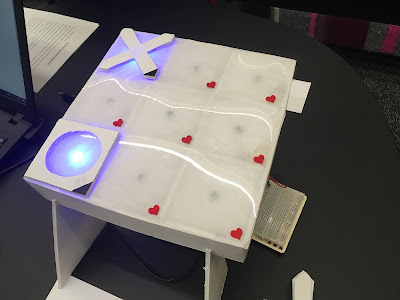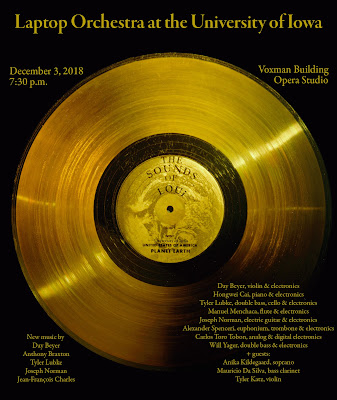I'm blessed to have worked with wonderful students in the Laptop Orchestra at the University of Iowa this fall 2018. Among other things, Will Yager taught us the performance practice for Anthony Braxton 's compositions, we performed Composition #228 , Tyler Lubke composed a new piece titled Voyager about... Voyager , Joseph Norman put together 8-channel live electronics for his compositions Fracture/Morphosis (for trombone, violin, bass and live electronics) and La petite divagation (for bass and live electronics), Day Beyer built a custom metal instrument and composed Warning Bells for the ensemble. Finally, I had the pleasure to work with Anika Kildegaard (soprano) and Mauricio Da Silva (bass clarinet), who performed a new version of Nattie's Air with string metallic accompaniment (2 violins and cello amplified through transducers affixed to a tam, a Chinese cymbal, and other metals.) Here was our basic set-up for this concert:



